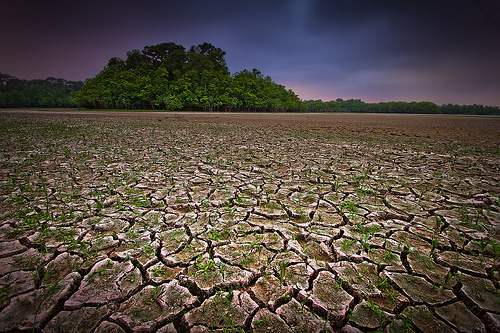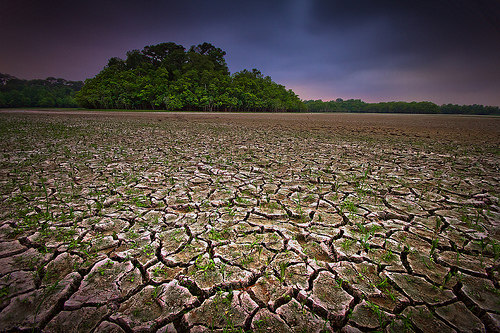
Drought-stricken Texas. (Photo by Jeff Reid.)
Students of science and agronomy are likely aware that there’s a link between water and food production. (It’s true; look it up.) Last week, John Upton articulated what this means for agriculture in the wake of recent heat and drought across the United States. In short: less food.
The question then becomes: What happens to food production if the United States is experiencing regular or permanent droughts?
ThinkProgress’ Joe Romm looked at the likelihood of such a scenario in a post over the weekend. An excerpt:
[T]he Earth has warmed only a bit more than 1°F since the catastrophic Dust Bowl — and we are poised to warm an astounding 9-11°F this century if we stay anywhere near our current greenhouse gas emissions path.
Romm points to a series of studies that present a scenario in which the Southwestern United States is in a permanent drought starting in 2050. Granted, this isn’t exactly the breadbasket. But one projection suggests that even in less arid areas, severe to extreme drought could occur biannually.
A new mapping tool from ESRI draws a direct link between aridity and reduced crop yield. The animation below shows the correlation between crop yields in the United States today and irrigation. The more irrigation in a region, the higher the yield. If that irrigation system becomes hampered or halted by drought, yield falls off proportionately. (The Atlantic Cities has more discussion on this point.)

(At center is an icon generated by the ESRI mapping tool.)
If the maps don’t convince you, perhaps these anecdotes will. Texas, still recovering from the worst drought in its history, is desperately searching for new water supplies to prevent similar impacts in the future. Half the state’s water goes to agriculture, and earlier this year water managers cut off the supply to farmers and ranchers to make sure there would be enough for people in cities. Even in a drought that’s far less damaging than last year’s, agriculture is significantly impacted.
Canada, on the other hand, is expecting bumper crops after a wetter-than-usual few weeks. Some areas of Canada have seen damage from too much rain. Canada’s milder climate also means that it’s less likely to see the worst impacts of climate change on its agricultural supply.
The message, in short: If you’re looking to start a farm somewhere, skip the Southwest. Try Saskatchewan.




